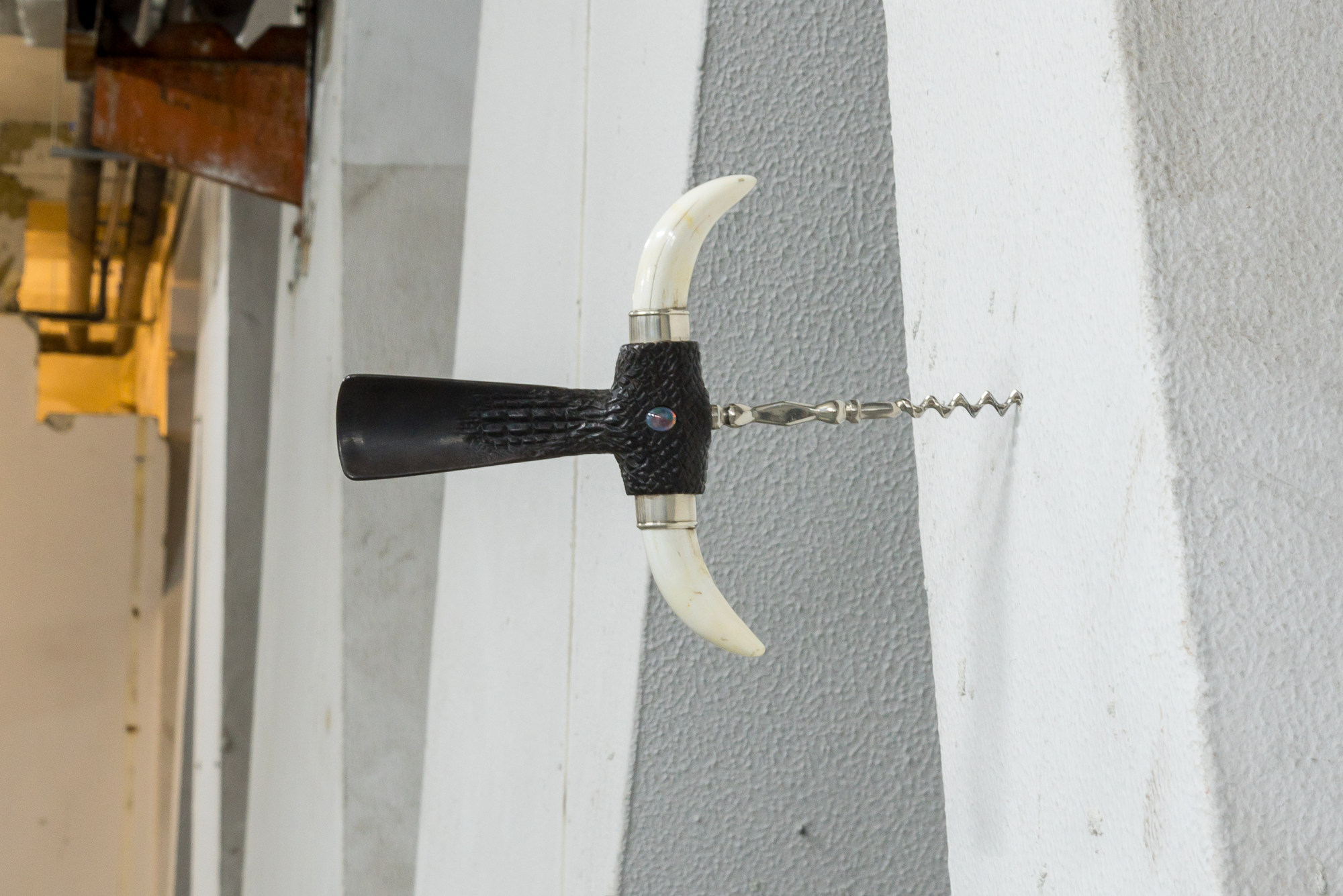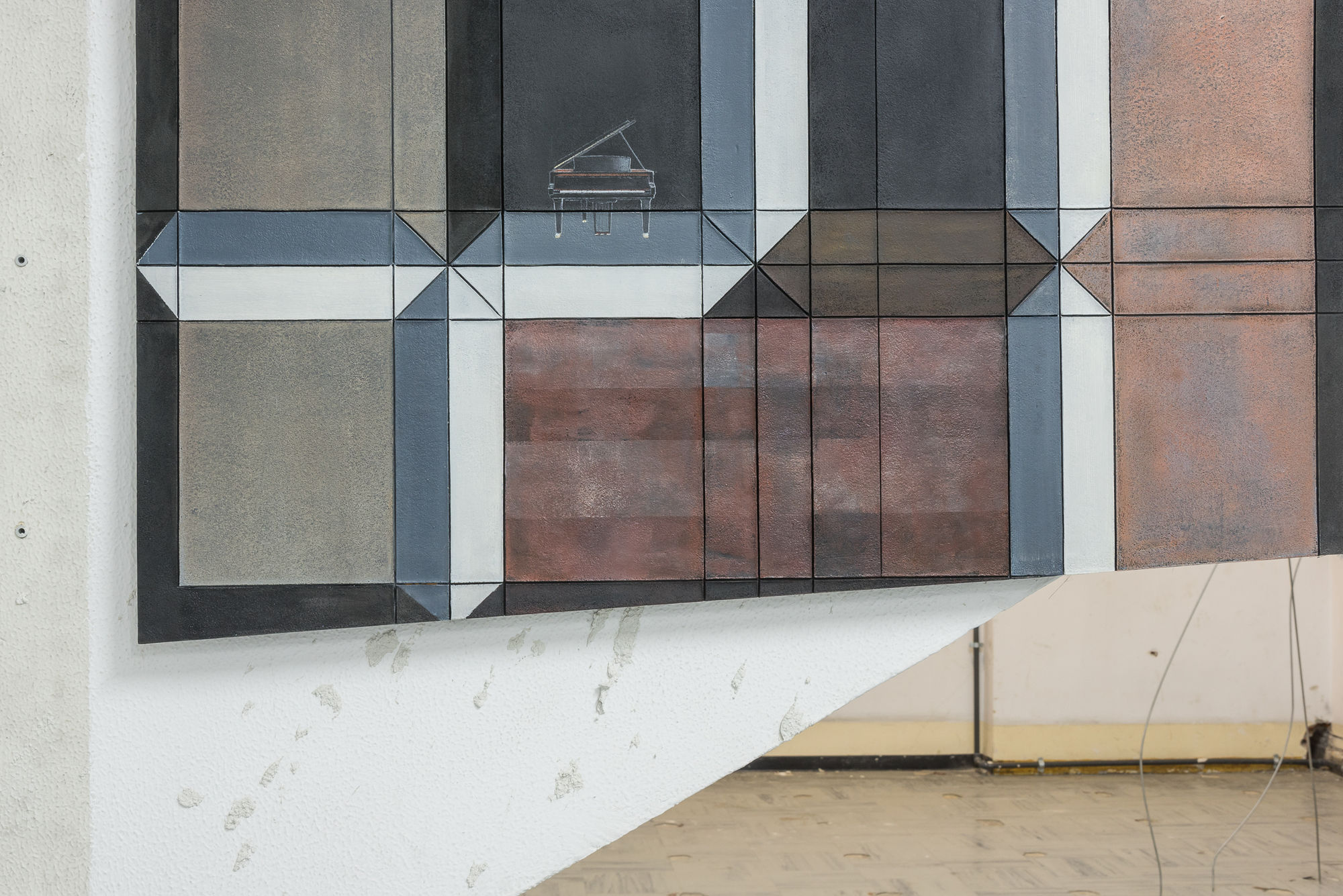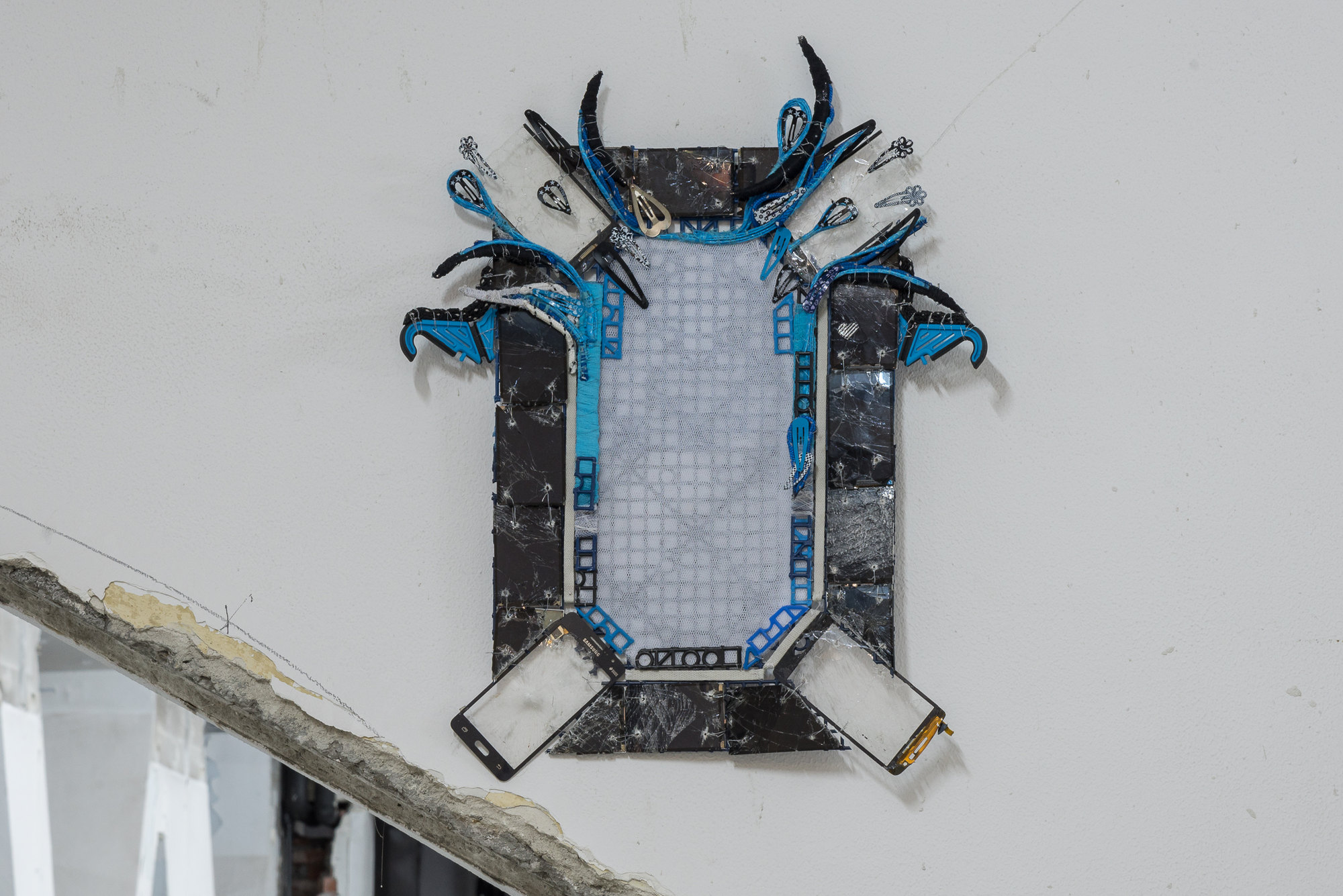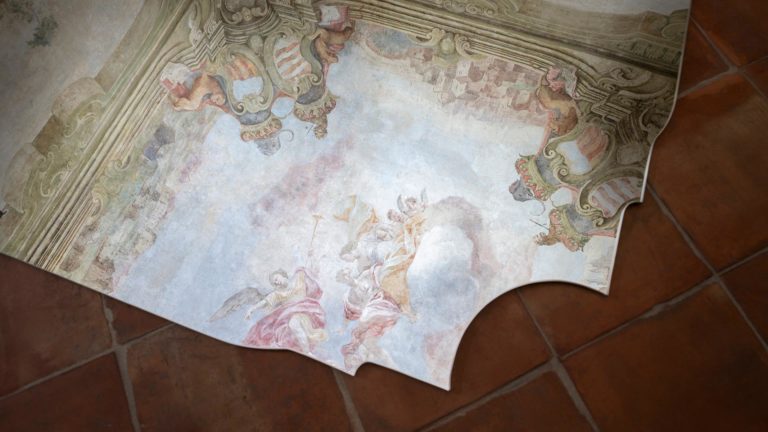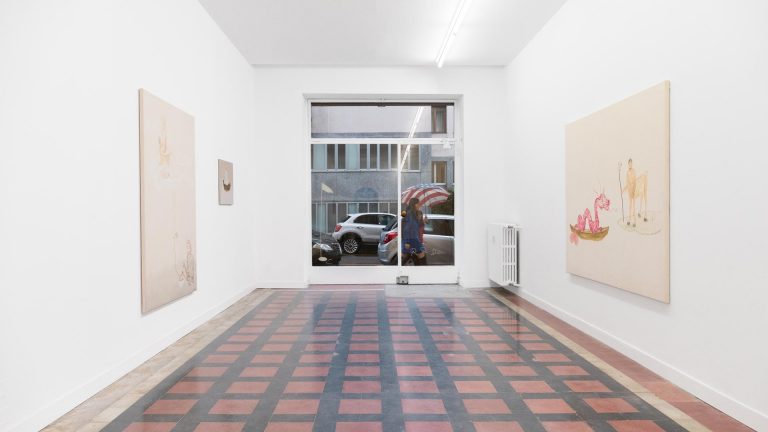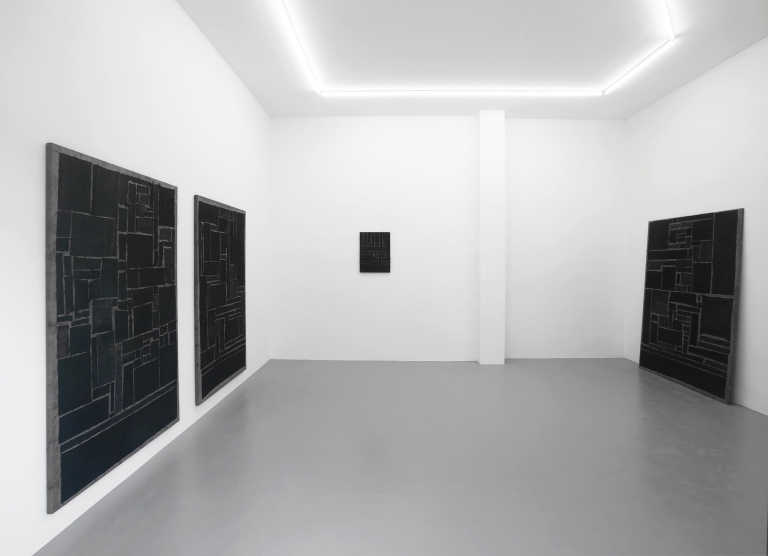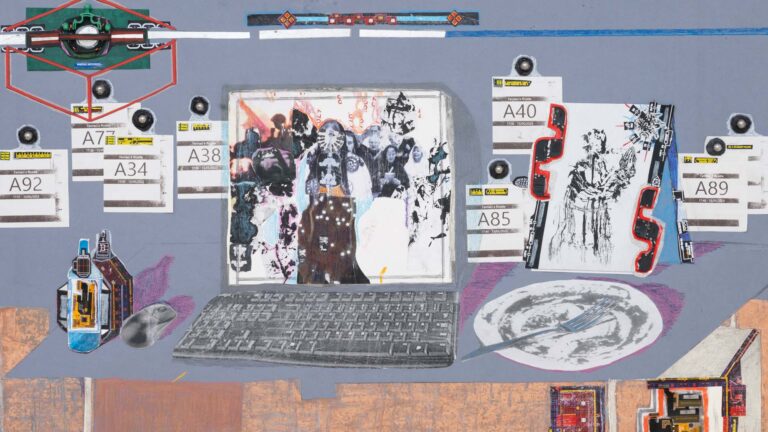Artists: Anna-Sophie Berger, Tatjana Danneberg, Melanie Ebenhoch, Oscar Enberg, Haris Epaminonda, Francesca Ferreri, Lena Henke, Renato Leotta, Irina Lotarevich, Paul Maheke, Lydia Ourahmane & Hiba Ismail, Stéphanie Saadé, Fabio Santacroce, Anna Schwarz, Anna Solal and Stafett (Minda Andrèn, Jennifer Gelardo, Flavio Palasciano, Alexander Jackson Wyatt)
Exhibition title: SCAMMING
Curated by: Flavio Palasciano and Franziska Sophie Wildförster
Venue: Palazzo Lancia, Turin, Italy
Date: November 4 – 17, 2017
Photography: All images copyright and courtesy of the artists and Flavio Palasciano
The exhibition Scamming , taking place at the Palazzo Lancia in Turin, unfolds the nature of contemporary myths and imagines their possible contaminations and détournements through subversive acts of theft and strategic scamming. Scamming proposes deception and fraud as productive artistic tools that have the possibility to appropriate the languages and materials of the taught, and to work, forge, twist, and destabilize them and to uncover what hovers underneath.
The works gathered here do this in dialogue with the everyday myths inscribed in the chosen stage-forming environment: the Palazzo Lancia, an architectural landmark of Turin, and a powerful historic symbol for its inhabitants that has shaped the collective imaginary. The late modernist skyscraper, commissioned in 1953 by Gianni Lancia and designed by the architects Nino Rosani and Giò Ponti, was to serve as the new administrative headquarters for the automobile manufacturer Lancia. While similar to the Pirelli Tower in Milan, it stood out as the first of its kind in Turin. The Palazzo’s completion in 1956 coincided with the “miracolo economico,” the explosive Italian postwar economic boom of the fifties and sixties.
However, by 1969, Lancia was suffering severe financial setbacks, and rival Turinese automobile manufacturer FIAT made a bid to take over the building. FIAT would occupy the Palazzo for the next three decades, coinciding hard-left activism and the beginning of seeming post-ideological politics and the rise of the neoliberalism and global financialization that must be read in relation to recurring nationalism. At the end of the nineties, FIAT vacated the building, opening it up for investors. Since then, there has been a succession of failed attempts to transform the structure into new, elitist, and exclusive forms, in an effort to attract prestigious companies or luxury condominiums.
Emitting the same Kafkaesque aura as the inaccessible Castle , the Palazzo today has not lost the link to its identity-sustaining myth of not only Italian but European and “Western” growth, but still, the surfaces of both the building and of the belief in European liberalism have witnessed cracks and erosions. The scope of sociopolitical, economic, and cultural narratives articulated and the material languages present in Scamming exceed the specific context of the Palazzo Lancia. Yet, they are nonetheless deeply anchored in a mutual material and ideological reality of value systems that are attempted to be made unstable.
Roland Barthes’ “Myth Today” was published one year after the Palazzo’s completion and underpins the cartography of Scamming. Seen in the light of the oft-conflicting individual and collective identity formations, the myth after Barthes is a metalinguistic system of signs, which deforms and empties out the formation of meaning through (1) “expression” and (2) “content” and articulates something additional and ideologically motivated. This “extra” of the sign is inscribed in the material reality of the everyday, trivial and unnoticed. Something that is not easily caught by sight, it spreads and takes on different shapes, colors, and materials to naturalize and disguise itself in repetition.
The space where the exhibition takes place reveals layers of skins, each one evidence of a different attempt in the Palazzo’s history to renovate, renew, and repair. These attempts are constantly exposed: one may see them by the difference in the floor, which mutates from raw concrete to linoleum to tile, or in the several layers of paint present on the walls. Such are the works of the artists collected in this exhibition, whose multilayered practices intertwine elements of the political, the economic, and cultural languages and materials with the autobiographical, the emotional, and the intimate sphere of identity definition and imagination, and create a speculative construct of an individual view of the world and its structures. Mythologies are identity-defining, and vice versa: the construction of individual identity generates new a myth.
-Franziska Sophie Wildförster and Flavio Palasciano
SCAMMING, 2017, exhibition view, Palazzo Lancia, Turin
SCAMMING, 2017, exhibition view, Palazzo Lancia, Turin
Melanie Ebenhoch, Palazzo, 2017
Stéphanie Saadé, Nostalgic Geography, 2013
Stéphanie Saadé, Nostalgic Geography, 2013
Scamming, 2017, exhibition view: Renato Leotta, Limoni, Minda Andrén, All Modern Things Have Always Existed, Alexander Jackson Wyatt, In Turin, Minda Lied, Jenny Lied
Minda Andrén, All Modern Things Have Always Existed, 2017
Renato Leotta, Limoni, 2017
Francesca Ferreri, Eterocronie, 2017
Francesca Ferreri, Eterocronie, 2017
SCAMMING, 2017, exhibition view, Palazzo Lancia, Turin
Anna-Sophie Berger, Concrete Coat (Amalfi), 2016
SCAMMING, 2017, exhibition view, Palazzo Lancia, Turin
Lena Henke, Knowable Communities; Pleasing Prospects, 2017
Lena Henke, Pleasing Prospects, 2017
Lena Henke, Knowable Communities, 2017
Scamming, 2017, exhibition view: Irina Lotarevich, Stack, and Anna Schwarz, Another Spot
Scamming, 2017, exhibition view: Alexander Jackson Wyatt, In Turin, Alex Lied , and Francesca Ferreri, Fuzzy Traces
SCAMMING, 2017, exhibition view, Palazzo Lancia, Turin
Fabio Santacroce, EVEN RICH KIDS HAVE A SOUL, 2017
Scamming, 2017, exhibition view: Melanie Ebenhoch, Nude, and Francesca Ferreri, Fuzzy Traces
Melanie Ebenhoch, Nude, 2017
Francesca Ferreri, Fuzzy Traces, 2017
Francesca Ferreri, Fuzzy Traces, 2017
Scamming, 2017, exhibition view: Francesca Ferreri, Fuzzy Traces and Fabio Santacroce, EVEN RICH KIDS HAVE A SOUL
Haris Epaminonda, Chapters, 2013
Haris Epaminonda, Chapters, 2013
Alexander Jackson Wyatt, In Turin, Flavio Lied, 2017
Scamming, 2017, exhibition view: Tatjana Danneberg, deep sea hydrothermal vent shrimp, Melanie Ebenhoch, Palazzo and Francesca Ferreri, Fuzzy Traces
Tatjana Danneberg, deep sea hydrothermal vent shrimp, 2017
Tatjana Danneberg, deep sea hydrothermal vent shrimp, 2017
Melanie Ebenhoch, Palazzo, 2017
SCAMMING, 2017, exhibition view, Palazzo Lancia, Turin
Fabio Santacroce, EVEN RICH KIDS HAVE A SOUL, 2017
Scamming, 2017, exhibition view: Lena Henke, Pleasing Prospects, Irina Lotarevich, Stacks and Stéphanie Saadé, Golden Memories
Stéphanie Saadé, Golden Memories, 2015
Scamming, 2017, exhibition view: Anna-Sophie Berger, Concrete Coat (made in Italy) and Anna Schwarz, Another Spot
Anna Schwarz, Another Spot, 2017
Anna-Sophie Berger, Concrete Coat (made in Italy), 2016
SCAMMING, 2017, exhibition view, Palazzo Lancia, Turin
Oscar Enberg, Irrational Exuberance, 2017
Irina Lotarevich, Stacks, 2017
Irina Lotarevich, Stacks, 2017
SCAMMING, 2017, exhibition view, Palazzo Lancia, Turin
Jennifer Gerlado, Standing Ovation, 2017
Jennifer Gerlado, Standing Ovation, 2017
Scamming, 2017, exhibition view: Melanie Ebenhoch, Grand Piano, 2017 and Flavio Palasciano, Fragile Costruzione Mobile, 2017
Melanie Ebenhoch, Grand Piano, 2017
SCAMMING, 2017, exhibition view, Palazzo Lancia, Turin
Anna Solal, Horny Sky, 2017
Flavio Palasciano, Fragile Costruzione Mobile, 2017
Lydia Ourahmane & Hiba Ismail, Alwad akhir zaman, 2017
Lydia Ourahmane & Hiba Ismail, Alwad akhir zaman, 2017
Flavio Palasciano, Fragile Costruzione Mobile, 2017
Paul Maheke, The River Asked for a Kiss (to Pateh Sabally), 2017
Paul Maheke, The River Asked for a Kiss (to Pateh Sabally), 2017
Paul Maheke, The River Asked for a Kiss (to Pateh Sabally), 2017









































